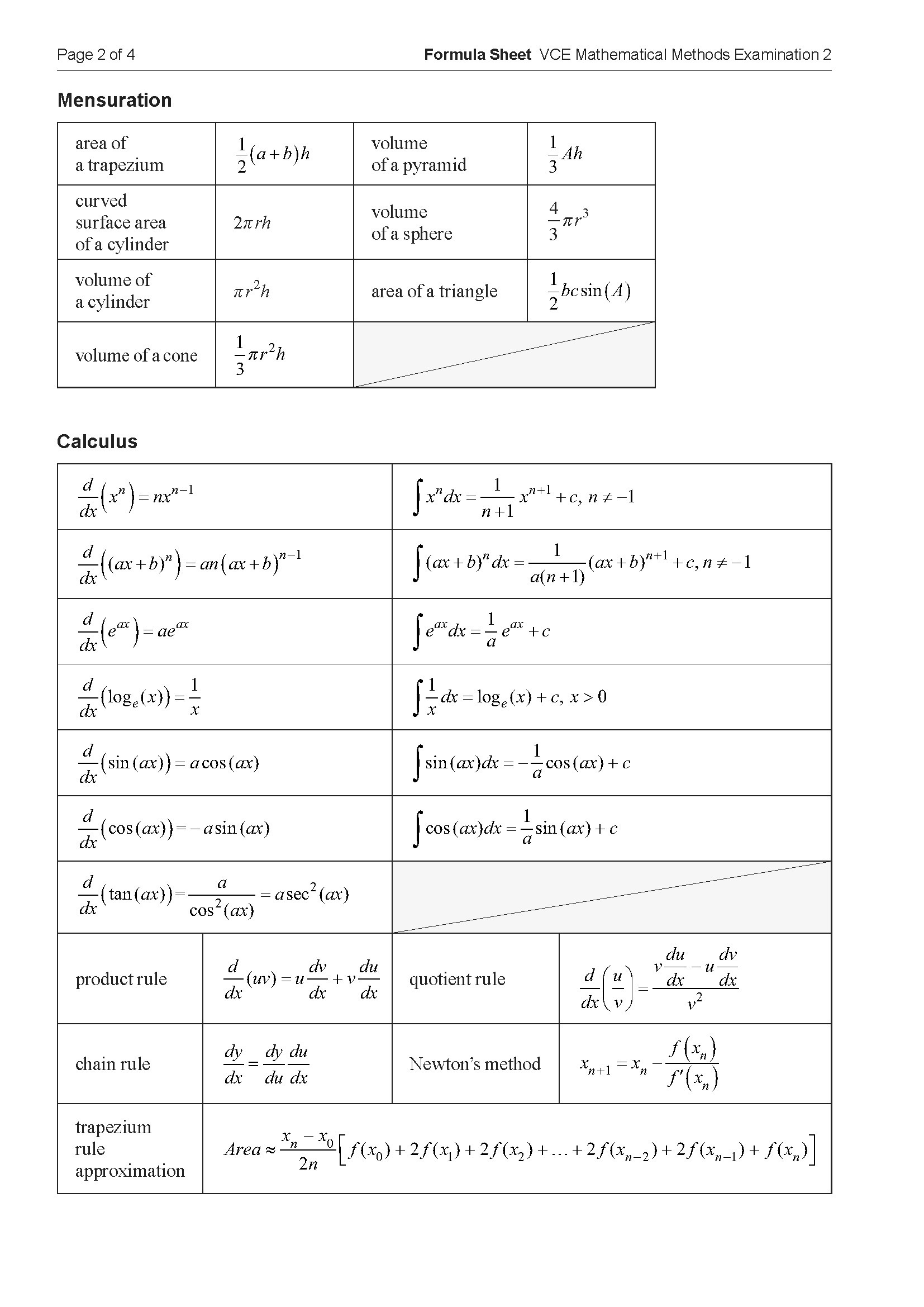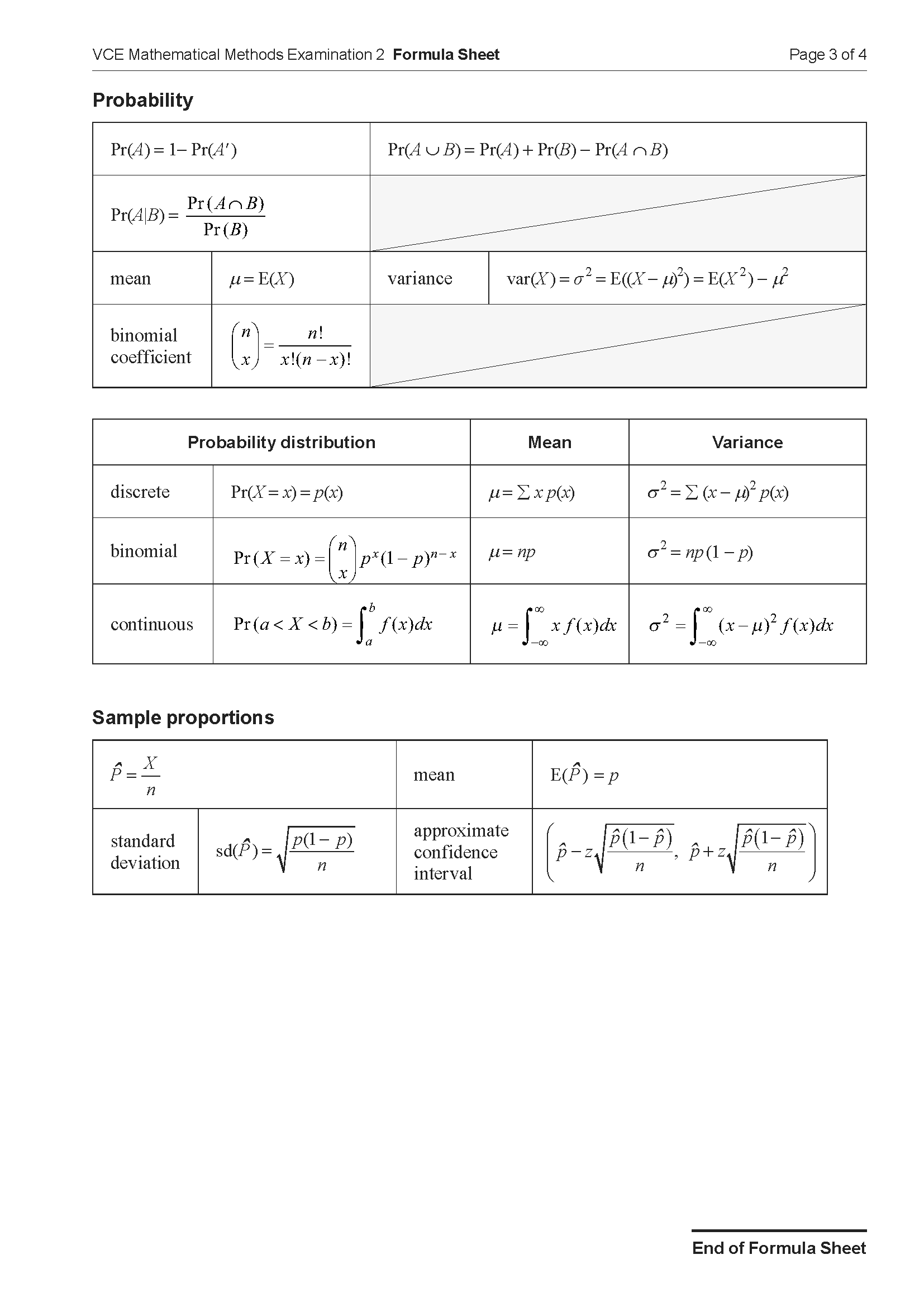2019 VCE Maths Methods Mini Test 9
Number of marks: 10
Reading time: 2 minutes
Writing time: 15 minutes
Section A – Calculator Allowed
Instructions
• Answer all questions in pencil on your Multiple-Choice Answer Sheet.
• Choose the response that is correct for the question.
• A correct answer scores 1; an incorrect answer scores 0.
• Marks will not be deducted for incorrect answers.
• No marks will be given if more than one answer is completed for any question.
• Unless otherwise indicated, the diagrams in this book are not drawn to scale.
The graph of the function \(f\) passes through the point \((-2, 7)\).
If \(h(x) = f\left(\frac{x}{2}\right) + 5\), then the graph of the function \(h\) must pass through the point
- A. \((-1, -12)\)
- B. \((-1, 19)\)
- C. \((-4, 12)\)
- D. \((-4, -14)\)
- E. \((3, 3.5)\)
End of Section A
Section B – No Calculator
Instructions
• Answer all questions in the spaces provided.
• Write your responses in English.
• In questions where a numerical answer is required, an exact value must be given unless otherwise specified.
• In questions where more than one mark is available, appropriate working must be shown.
• Unless otherwise indicated, the diagrams in this book are not drawn to scale.
Consider the functions \(f: \mathbb{R} \to \mathbb{R}\), \(f(x) = 3+2x-x^2\) and \(g: \mathbb{R} \to \mathbb{R}\), \(g(x) = e^x\).
a. State the rule of \(g(f(x))\). 1 mark
b. Find the values of \(x\) for which the derivative of \(g(f(x))\) is negative. 2 marks
c. State the rule of \(f(g(x))\). 1 mark
d. Solve \(f(g(x)) = 0\). 2 marks
e. Find the coordinates of the stationary point of the graph of \(f(g(x))\). 2 marks
f. State the number of solutions to \(g(f(x)) + f(g(x)) = 0\). 1 mark
End of examination questions
VCE is a registered trademark of the VCAA. The VCAA does not endorse or make any warranties regarding this study resource. Past VCE exams and related content can be accessed directly at www.vcaa.vic.edu.au

